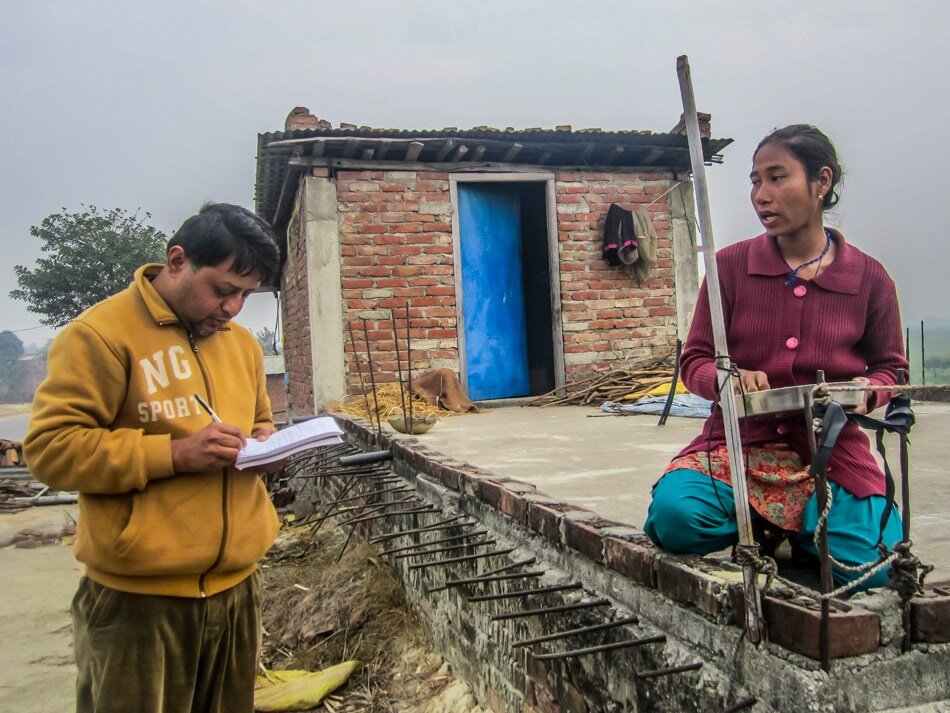On the (bumpy) road in Nepal
Negotiating buses, drivers and hard-to-find fuel en route west from Kathmandu

One afternoon in early January, I pushed and shoved my way through a milling crowd inside Nepal’s only exhibition hall in Kathmandu. It was the last day of a three-day exhibition on alternative energy and hundreds of people had crowded into the stalls seeking solutions to the energy crisis they faced in their daily lives.
It was impossible to enquire about any products — on display were dome-shaped models of biogas plants, improved cooking stoves, portable steel stoves, bio briquettes. There was no way I could have a productive conversation with salespeople amid people elbowing each other as the crowd multiplied. (I would learn later that over 50,000 people visited the event.) Officials of the Alternative Energy Promotion Center, the state agency that organized the event, were quoted in the media saying that it was the first time there was such a huge interest in renewable energy since the annual event started three years ago.
A month later, I disembarked from a "tourist bus" in Narayanghat, a highway town 150 kilometres west of Kathmandu. The bus, carrying Nepali and foreign tourists bound for a wildlife sanctuary a few kilometers east from the town, headed towards Sauraha. My destination was Parasi, the headquarters of Nawalparasi district near the Indian border. Driving west, I crossed the Narayani River, one of Nepal’s major waterways that flowed toward India. A journey of 100 kilometres lay ahead of me.
Along the way, we passed through dense forests; the remnants from the 1940s when the malaria infested jungles were largely the domain of now endangered wildlife — one-horned rhinoceros and Royal Bengal tigers. After the deforestation in the 1970s, the jungles had regenerated thanks to Nepal’s strict conservation policy and success of community-run forests. We also zoomed past scenes indicative of an ongoing energy crisis that has gripped this country of 28 million: mini-mountains of firewood in front of almost every house and long queues of motorbikes near petrol stations.
After crossing the mid-point of Nepal’s East-West Highway (the 1,050-kilometre road along the southern plains), we came across groups of women, their backs heavy with firewood, emerging out of the forest. In male-dominated Nepali society, the women are the first responders to the energy crisis. They bear the task of cooking food and energy becomes their first concern. Their loads were up to 30 kilograms. Most of them had begun the day at mid-morning and even by late afternoon, they were far from home.

The second leg of my journey began in Hetauda, an industrial town in eastern Nepal. From there, I was leaving for Bhorleni, some 60 kilometres east. The dirt track that led to the village was bumpy, which I was prepared for. What I wasn’t prepared for was the exorbitant fare from the driver of a rented car. After some negotiations, we settled on 9,500 rupees (about $US90) for a day-long trip. The next day, we were supposed to meet at the hotel at 6 a.m. When I called the driver the next morning, he told me he was queuing up for petrol across the border in Raxaul in north Indian state of Bihar. He said he had left at 5 a.m. and it would take hours for him to drive back.
Although the main border crossing (that had been blocked for four months) was opened the previous day, I believed what he said. The transport sector was hardest hit by energy crisis. Still, the journey was uncertain and I was worried since I had already informed my contacts in villages along the road about the trip. I rushed to a bus counter near my hotel and asked the man in charge to find me a car. He began working the phone, waking the drivers up from their sleep. Some of them said they didn’t have fuel. To them, he had a ready answer: I can provide you with fuel if you are willing to go. In between punching numbers on his telephone, he offered his bargain: 11,000 rupees (about US$104). Realizing that I was travelling there for the first time, he started talking about how bad the dirt track was. People waiting for their vehicles to Kathmandu nodded in agreement.
Finally the deal was done. The owner-driver of the car arrived. The local transport in charge brought gallons of petrol for the car. Around this time, I received a call from the driver who was supposedly queuing up in the Indian side of the border. He was ready to go. Later, our driver told me he was lying and probably was trying to find someone who would drive on the bumpy road. I told the driver: My friend, we are already on our way to Bhorleni!
